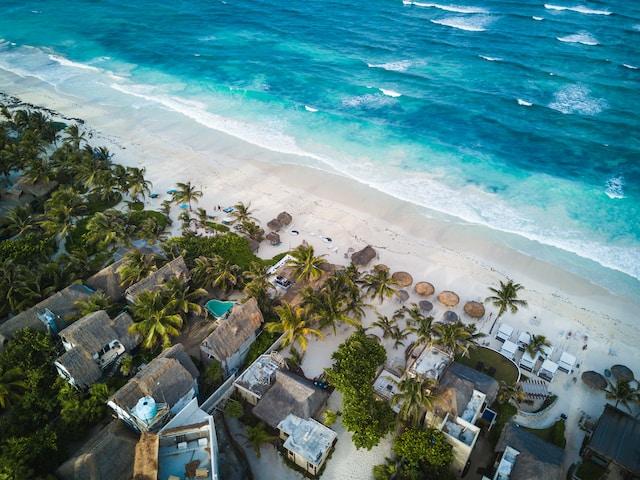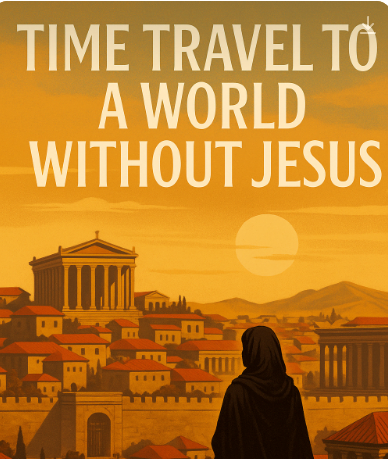The region where Mexico is located is as old as the planet itself. The country has been home to several civilizations, such as the Mayans, Aztecs, Olmec, etc. dating back more than 13,000 years!
Today, Mexico is one of the most densely populated countries in South America, with a population surpassing 130 million people. Mexico’s cultural heritage, diverse landscape, rich cuisine, and good-natured folk are a few things the country is famous for globally.
Despite facing a number of challenges, Mexico strives to compete with many under-developed nations in areas such as manufacturing, mining, energy, tourism, etc.
For people who are fascinated by landscapes, archeology, natural beauty, cultures, and human history, Mexico may become a second home to fulfill their craving for exploration.
This article is dedicated to informing American aspirants who wish to reside in Mexico temporarily or permanently.
Types of Immigrations available to US Citizens
Moving to a new place can be tricky, especially when a person is moving from an advanced country to a developing nation. It is advisable that prior to moving, adequate research be conducted to avoid any unwanted situations. It is also advised that information regarding the visas, policy, process, requirements, and payments, be obtained before applying for the visa that suits the needs of the applicant.
Travel Visas
For first-time movers in particular, it is prudent to live in the new location for some amount of time before permanently relocating. American citizens, having a valid passport can enter and stay in Mexico for up to 180 days without a travel visa. Merely presenting the passport at the border (if traveling by road) or at the check-in counter at the airport is sufficient.
In case the traveler wishes to extend his/her stay beyond the generally stipulated time, an extension can be applied at the local Instituto Nacional de Migración (INM) office. The extension is awarded, usually, for increments of 180 days (6 months) at a time and can be applied for up to 3 times, provided the total stay doesn’t exceed 540 days in an 18-month period.
Temporary Residence Visa
A temporary residence visa lets the holder stay in Mexico for up to four years. During the stay, the holder may travel out of Mexico as often as required. However, the salida y regreso permit is necessary to be obtained from the immigration authorities every time the person exits the country.
Additionally, the rules for the aforementioned permit vary depending on the individual circumstances, needs, and purpose. Secondly, the holder shall ensure that his/her temporary visa will still be valid on re-entering Mexico.
Requirements
The requirements to apply for a temporary residence visa are as follows:
- Proof of financial means to support and maintain decent subsistence in Mexico
- Character certificate proving that the applicant has no criminal record and bears a moral character appropriate to Mexican society
- Valid passport (valid for minimum 6 months from the time of application)
- Health certificate
- Recent passport-sized photographs
- Payment of fees as per the below structure:
- Visa application: $36
- Temporary residence card: $212
- Character certificate: $50
- Health certificate: $100
- Marriage certificate if applicable
- Details of children if applicable
- Details of dependents
- A statement specifying the purpose of obtaining the visa
- Health insurance (must provide coverage in Mexico)
Process
The process for applying for a temporary residence visa can be initiated from the US or while staying in Mexico on a travel visa. The first step is to align all the required documents stated above. The applicant must fill out the Solicitud de Visa application form and submit the same along with the documents and the applicable fees.
The process time for processing the visa may vary depending on the case and applicant’s eligibility, however, it may take several weeks before the applicant is called for a formal interview.
Permanent Residence Visa
Another form of immigration offered to US citizens is a permanent residence visa. Note that a permanent residence can not be applied for at the outset; the applicant has to become eligible to apply for a permanent resident status in Mexico.
A permanent residence visa allows the holder to stay in Mexico indefinitely provided the conditions are met, and he/she may move in and out of the country as required, provided they obtain the salida y regreso permit.
Requirements
Besides the documentation requirements, which are more or less the same for a temporary residence visa, the requirements mentioned below are added up.
- Proof of income: Evidence that the applicant has a steady earning of a certain amount each month and that the said sum is accessible for use by the applicant at any given time. This may include bank statements, salary slips, etc.
- Stay in Mexico: The applicant must have stayed in Mexico for at least 4 years continuously on a temporary residence permit
- Payment of fees: The fees structure (subject to change) for a permanent visa application is as follows:
- Application: US$ 36
- Change of status: US$ 192
- Criminal clearance certificate: US$ 50
- Health certificate: US$ 50-$100
Process
The process that needs to be followed for a permanent residence visa is the same as for a temporary residence visa. The application form Solicitud de Visa is submitted along with supporting documents and the advised fees (as stated in the requirements section) at the consulate office.
Formalities such as an interview follow after the submissions are made.
Work Visa
As the name suggests, US citizens who gain legal employment in Mexico can apply for a work visa. A work visa process is initiated by the employer, who successfully establishes that the position can not be filled by a Mexican citizen or a temporary or permanent resident.
Upon obtaining a work visa, the holder can stay in Mexico for as long as the employment continues, or the holder applies for other options to stay in the country.
Requirements
While the specific requirements may change with time, or the applicant’s situation, the requirements listed below are a must:
- Valid passport (same as for temporary residence visa)
- A valid job offer from a Mexican employer or a US company having an operational office in Mexico
- Letter of invitation detailing the position, remuneration, duration, abode facilities, etc.
- Duly filled out “Solicitud de Visa para Trabajar en México” (Application for a visa to work in Mexico) work visa form
- Proof of financial means to maintain basic subsistence and standard of living in Mexico (at least US$1,500/month)
- Police clearance certificate proving a clean criminal record
- Health certificate proving that the applicant does not carry any contagious disease
- Payment of the fee is usually US$36 for an application and US$ 159 for a work permit
Process
The process for obtaining a Mexican work visa has the following steps (generally speaking)
- Applying for a position in Mexico
- Obtaining job-offer letter
- Gather and prepare the required documents
- Complete the application form mentioned above
- Submitting the application
- Prepare and attend the interview at the consulate
- Once the process is completed and approved, the applicant may receive the visa from the consulate or get the same delivered to an address
Business Visa
A business visa is purely for investors who are interested and able to invest in personal or state-run projects in Mexico. In many cases, the authorities and relevant ministries will advise on the areas of investments, while in some cases, it is left at the discretion of the investors.
The visa is initially granted for a year and can be renewed when required.
Requirements
Though the requirements may vary from case and individual requirements, some of the basic requirements to qualify for a business visa are given below:
- Proof of investment
- Detailed business plan
- Letter of intention (LOI)
- Valid passport
- Proof of financial resources (bank statements for at least the past 2 years, source of income, credit score, etc.)
- Supporting documents (academic, health insurance, travel insurance, etc.)
- Clean criminal record
- Properly filled out form FM3 (can be obtained from Mexican Consulate or official website)
Process
Generally, the process pertaining to the application for a business visa involves the following steps:
- Specifying the type of business visa: Various business visas are available each for a specific purpose, situation, and level of investment. The most commonly applied business visas are ‘Visitor for Business’ and the ‘Temporary Resident Visa for Business’.
- Gather required documentation: Valid passport, business plan, proof of investment, etc. are some of the essential documents that need to be attached to the application.
- Submit application: The relevant application form and relevant documents can be submitted at the consulate or online. The applicant is required to pay the applicable fee at this point in time. The fee structure, as of 2023, is given in the below table.
| S# | Type of business visa | Fee in US$ |
| 1. | Visitor for Business | $36 |
| 2. | Temporary Residence for Business | $217 |
*Note that the fees are subject to change with time, it is advised that the latest fee structure may be inquired from the official website or directly from the consulate office.
- Attend the interview: Successful candidates are called upon for an interview with an embassy official or consulate officer. Applicants must prepare themselves for questions regarding the business activities they wish to perform, purpose, aim, and duration of stay with plausible justification.
- Receiving the visa: If the applicant’s documents and interview go well, usually the visa is processed within a week (working days only). In some cases, it may take longer, which may be due to discrepancies or a backlog of applications. The visa can be collected directly from the consulate or requested to be delivered to a mailing address (subject to additional charges).
Things to consider before moving to Mexico
Now that we have wrapped up the types of immigration, the processes, and the requirements, it’s time to put some thought into the associated factors to consider before relocating to Mexico. This step is important to save ourselves from any surprises at the last moment.
Here are some aspects associated with the relocation whether permanent or temporary.
Real Estate
First and foremost, whether a person is moving into Mexico as an expat, or otherwise, long-term residence is not financially viable in a hotel. The applicant must secure a rental apartment according to his needs; it is not advisable to purchase property before proper assimilation to the new place.
The below tabulation represents the rents of properties in various cities and towns of Mexico.
| Estimates based on ONE BEDROOM apartment | |||||
| S# | City | Key neighborhoods | Rental | Ownership Price | Area Type |
| 1. | Mexico City | Polanco, Santa Fe, and Lomas de Chapultepec | $1500 – $1,850 per month | $125,000 -$300,000 | Exclusive |
| 2. | Mexico City | Iztapalapa, Iztacalco, and Gustavo A. Madero | $400 -$900 per month | $50,000-$150,000 | Affordable |
| 3. | Cancun | – | $500 – $800 | $80,000 – $130,000 | Tourist destination, affordable |
| 4. | Guadalajara | Providencia, Puerta de Hierro, and Country Club | $500 – $700 | $80,000 – $150,000 | Tourist destination, mixed |
| 5. | Monterrey | San Pedro Garza Garcia, Valle Oriente, Guadalupe, Apodaca, and Escobedo | $500 – $700 | $70,000 – $120,000 | Mixed |
*All prices in USD
Best Locations to Choose for Living in Mexico
While the term “best” is relevant and varies depending on the person’s own perceptions, definition, likes and dislikes, etc. we can, however, serve a picture as close to reality as possible. Mexico is a vast country, split into several regions showcasing unique characteristics.
Factors such as affordability, neighborhood, schools, healthcare facilities, etc. play a vital role in the decision-making process. Here are a few localities, that may be considered based on the above-mentioned and other important factors.
- Puerto Vallarta: Single travelers seeking to explore nightlife and vibrancy of Mexico along with their prime objective in the country may prefer Puerto Vallarta as a place to live. The city has many charming pristine beaches while offering a colorful nightlife. The locals are quite friendly and cooperative which makes settling in a lot easier.
- San Miguel de Allende: Arts, culture, and architecture of San Miguel are heavily influenced by the Spanish colonial era. The city hosts a sizeable expatriate population that has formed a community of its own. For those who are inspired by arts and culture, San Miguel is a must-see destination.
- Mexico City: Mexico City is a bustling metropolis dotted with world-class museums, art galleries, restaurants, and many other major cultural attractions. Mexico City is the largest in Mexico and has many locales that are affordable to many income brackets. Due to the high influx of tourists and expatriates, the city is the least likely to create any cultural shocks for a US citizen.
- Guadalajara: The second largest city in Mexico is well-known for its splendid architecture, rich culture, and history. It is basically a tourist destination but some areas in the city offer exclusivity and all the basic amenities to the dwellers.
- Cabo San Lucas: Cabo is a resort town ranging offering 3-to-5-star accommodations. Breathtaking beaches and outstanding fishing opportunities attract folk who are passionate about beaches and fishing.
Areas that better be avoided in Mexico
No country, especially the size of Mexico, can be 100% perfect; after all humans tend to be different everywhere. The below cities have made the list due to rampant violence, drugs, and overall security situation in the city/area/locality.
- Tijuana: Tijuana lies on the border region of Mexico and the US. Incidents involving extreme violence are usual occurrences here. Drug trafficking and other associated crimes have gained a notorious reputation for this town.
- Ciudad Juarez: Another border city that shares traits with Tijuana and must be avoided.
- Acapulco: A once popular tourist destination, Acapulco has now become a center for homicide, drug trafficking, violence, and other associated crimes.
- Culiacan: The city lies in the Sinaloa region and boasts high-level drug trafficking, prostitution, violence, and other heinous crimes.
- Michoacan: Illegal arms, drug trafficking, counterfeit currency business, etc. are some of the most thriving businesses in Michoacan, needless to say, violence is a byproduct of all such activities.
- Acapulco: A once popular tourist destination, Acapulco has now become a center for homicide, drug trafficking, violence, and other associated crimes.
- Ciudad Juarez: Another border city that shares traits with Tijuana and must be avoided.
Cultural differences and surprises for a US citizen moving to Mexico
Every society is brought up differently, with each community observing and adhering to certain principles, religious beliefs, etc. Folks who move into a new society are matched against preset standards of the host society, and prone to be alienized if the gap is too wide.
Before moving to Mexico, it is important that the aspirants learn a few important things about some of the most prominent features of Mexican society at large.
- Familial & Social Values: Mexicans tend to be close to their families and the communities they belong to. Social gatherings, celebrations, and festivities can only be carried out by involving family and community. A US citizen should expect direct questions about his/her family, social belonging, and friends; unlike the US where such inquiries are considered disrespectful or too personal.
- The value of time: Mexicans have a totally different understanding of time compared to the US. Arriving late at a dinner or social and formal appointments is a norm. If a US citizen is hosting a party, he/she shouldn’t be offended by this behavior.
- Dining customs and Cuisine: Mexicans eat hot! – not just oven hot but spicy hot as well. And most often Mexicans will serve the same to their guests. Additionally, if ordering at a restaurant, collective order is placed in a family format rather than individual ordering.
- Respecting the elderly: Mexicans regard the senior members of their society with the utmost respect. The elderly exercise authority which is rarely defied. Being polite and respectful to the elders of the family is extremely important and will greatly help in cultural assimilation.
- Language: Though the young generation speaks fluent English, however, the majority of Mexicans prefer their native language Spanish over any other form of communication. It is advised that before relocating to Mexico, a basic understanding of Spanish is obtained (speaking and understanding both). Learning the language will also expedite the settling-in process.
The healthcare system in Mexico
Healthcare is provided by the Instituto Mexicano del Seguro Social (IMSS) to almost 60% of the population. The remaining 40% is catered by Secretaría de Salud (SSA). The population includes those who are unemployed and usually do not qualify for IMSS.
The private sector healthcare is accessible and available too, but at a very high cost, especially procedures and surgeries that are not covered by Insurance. It can be said that the quality of healthcare in Mexico depends on the region and the affordability of the patient.
For US citizens, it is advised that they reside in areas that are in close proximity to hospitals, private doctors, etc. Another very important inclusion is obtaining fully covered health insurance (for the family, if applicable). Some of the reputable health insurance providers in Mexico are listed below:
- GNP Seguros
- AXA Seguros
- Seguros Monterrey New York Life
- Mapfre México
Insurance plans must be compared and negotiated to achieve maximum benefits for the premium paid.
The education system in Mexico
Education is another area that needs to be well-researched for Americans who plan to move with their kids to Mexico, or plan to have babies in Mexico. Education in Mexico is overseen by the Secretaría de Educación Pública (SEP). The usual levels of education in the US apply here too; preschool, primary, secondary, high school, and so on.
Note that education is mandatory in Mexico for all children falling between 6 and 15 years of age. The literacy rate thus touches the high 90’s percentile. Similarly, the system offers various types of education at the higher secondary level such as vocational training, universities, specializations, doctorates, etc.
The most prestigious universities in Mexico are:
- National Autonomous University of Mexico (UNAM)
- Monterrey Institute of Technology and Higher Education (ITESM)
- Autonomous University of Nuevo León (UANL).
Similarly, plenty of cities in Mexico are famous for their schools, some are shared below:
- UNAM – Mexico City
- Tecnológico de Monterrey campus – Monterrey
- ITESM – Monterrey
- University of Guadalajara – Guadalajara
- ITESM – Guadalajara Campus
- Benemérita Universidad Autónoma de Puebla (BUAP) – Puebla
- Autonomous University of Querétaro
- Tecnológico de Monterrey- Queretaro Campus
Travel & Transportation System in Mexico
Mexico boasts a very well-structured and detailed transportation system across the country. The common locomotives include trains, roadways, airports, and public transit. Each mode of transport has its pros and cons, below is a brief analysis of each mode.
Roadways: Roadways are developed and stretch far and wide, connecting the entire country. While many of these roadways are unmetalled, especially ones running within cities, major roads include highways and motorways too.
The roads are generally in good condition, however, shall not be compared to developed countries such as the US. Going about in a personal vehicle is costly but does bring benefits such as time efficiency, luxury, etc.
Railways: Railways are primarily used for transporting goods. The passenger wagons are not as comfortable or developed as one would expect. Mexicans prefer moving in personal trucks rather than taking a train to other cities.
Airports: Mexico has more than 80 airports, many of which operate international flights. Major cities such as Mexico City, Guadalajara, Cancun, etc. manage up to 500 international flights on a daily basis. Generally, the airports offer reasonable facilities and services.
Public Transit: Public transit includes busses, subways, light rails, etc. The services and quality depend on the city and can highly vary.
Taxis: Car pool services such as Uber offer their full-fledged services across Mexico. Additionally, taxis are a reliable mode of transportation within a city and short distances. However, foreigners should compare fares of at least 3 taxis before to be saved from being overcharged.








